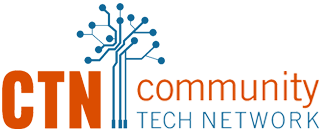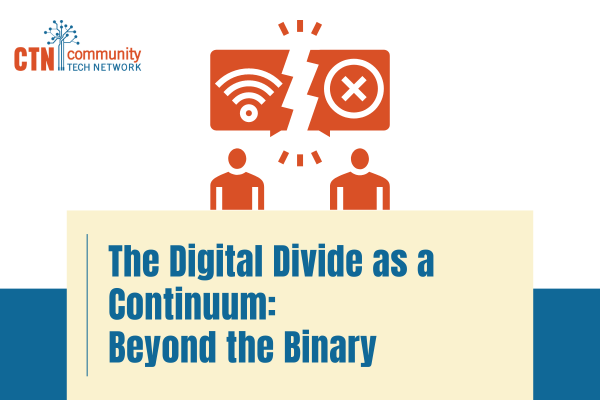The digital divide is not black and white — there are many shades of gray.
Can you think of a loved one — perhaps a parent or relative — that has a device and knows how to perform basic tasks on the internet but still struggles to fully understand technology?
Perhaps they know how to send text messages and search for information on Google, but they’re lost when it comes to things like online shopping, using apps, and watching TV shows on the internet.
Or maybe they’re comfortable performing those types of actions, but they have to call their child for help every time their device says it needs to complete some kind of update.
The digital divide is not binary. To put people into boxes of “Yes, this person is fully connected to the internet” or “No, they are not” is a gross oversimplification of the complex topic of digital equity.
Digital inclusion has various components, including broadband, devices, and digital skills. All of these are requisites for being connected in the digital age, but they cannot be reduced to the black-and-white model of either “I have this” or “I do not.” There are varying degrees of connectivity.
- Broadband Access: Due to local infrastructure (or lack thereof), some areas of the U.S. have faster, more reliable home internet than others. Simply having broadband access does not guarantee that it is high-quality. Additionally, affordability is a factor. Some folks may typically pay for home internet but have to cut in when finances are tight.
- Device Access: Just because someone has a smartphone, tablet, or computer does mean that their device is the latest version. Maybe you know someone with an iPhone 5. Are they as fully connected as someone with an iPhone 13? Or perhaps someone has a broken device. With a cracked screen, broken keyboard, or damaged mouse, are they fully connected?
- Digital Literacy and Skills: Digital literacy is a massive topic. There are so many digital skills to learn! From online safety, to QR codes, to Word documents and Excel sheets, it is impossible to quantify one’s technological abilities according to a yes-no scale. Everyone’s skill level falls on a different notch along the continuum!
It is also important to note that one’s place on this continuum is not static. Perhaps you taught your grandfather many useful tech skills two years ago, but now there are new things to learn!
In summary, we can imagine the digital divide like a tape measure. Let’s consider the section from 0 to 1 inch.
The 0 can represent folks who are completely disconnected from the internet. They’ve never even touched a device before and have no idea how the internet works.
Then you have people on the opposite end, located at the 1. They have all the latest gadgets, they know how to do just about everything on the computer, and their home internet is lightning-fast.
But what about everyone else? The majority of the population doesn’t fall into either the 0 or 1 category. They might be located at 0.0111, 0.245, 0.473, 0.895, or any other number in between. The closer to 0 their number, the less connected they are.
The amount of decimals in between the numbers 0 and 1 are endless. All of us have different experiences with the digital divide, and we all fall into different notches along the continuum.


Comments are closed.